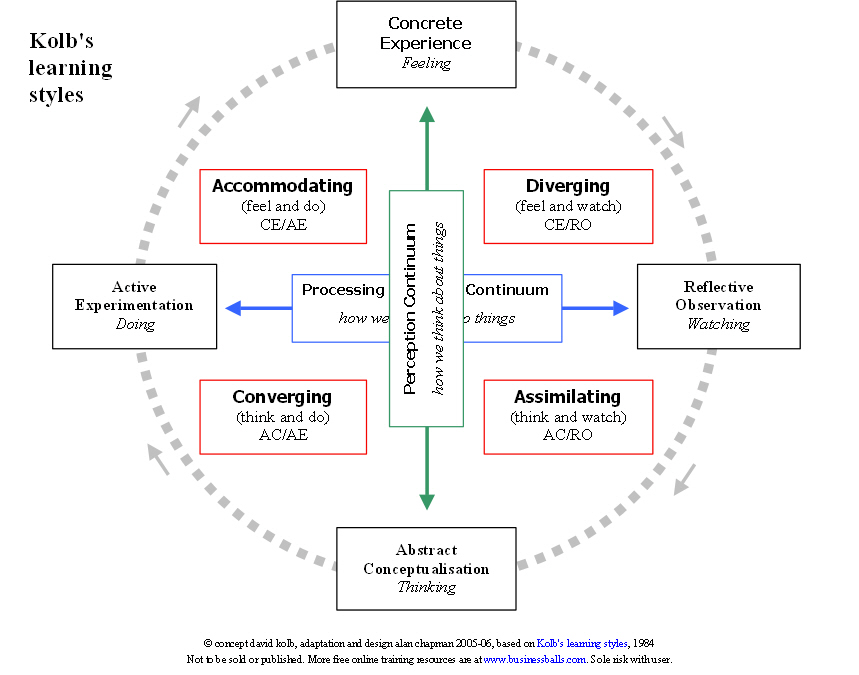After a two-week hiatus while I built sandcastles on the beach in Spain, it was good to get straight into a meaty bit of theory when I started catching up on ocTEL: David Kolb’s learning styles model and experiential learning theory.
Anyone reading this post probably knows Kolb’s theory already (feel free to skip to the next paragraph if that’s you). Anyway, I’ll keep it brief. We learn through a four-stage cycle: concrete experience, reflective observations, abstract conceptualisation and active experimentation. And we usually lean towards one of four learning styles: diverging (learning by feeling and watching), assimilating (thinking and watching), converging (thinking and doing) or accommodating (feeling and doing).
As I began to understand the theory, two things struck me. First of all, I thought I was an assimilator (that’s thinking and watching) but I’m more like an accommodator (feeling and doing). Apologies for the number of times I’ve referred to my Dad in this blog, but I remember when he showed me how to swing a golf club for the first time. As an assimilator (he’s a former science teacher), he tried to train me by imparting sound theoretical advice – much of which I ignored because I was itching to get my hands on the club and give it a bash. I came back to the theory later as I tried to improve, but my initial instinct was to feel, try and learn from my mistakes.
Secondly, it was unnerving to see that at my university we lean heavily towards one of Kolb’s four learning styles at the moment: assimilating (watching and thinking). We make very little allowance for accommodating, converging or diverging learning styles. So that’s where we’ll need to focus our energy.
How you actually help people experiment, feel and gain new experience via technology is a tricky one. Maybe we should accept that it’s not about technology, but people: technology can never deliver active experimentation or concrete experience on its own, but it can bring a geographically disparate cohort and subject matter experts together online. Once they’re there, they can gain and transform experience in their own ways; the right activities and direction will enable them to experience some of the ‘concrete, tangible, felt qualities of the world’. All of this requires careful planning and a skilful facilitator. But if it happens, then the technology should just disappear.
